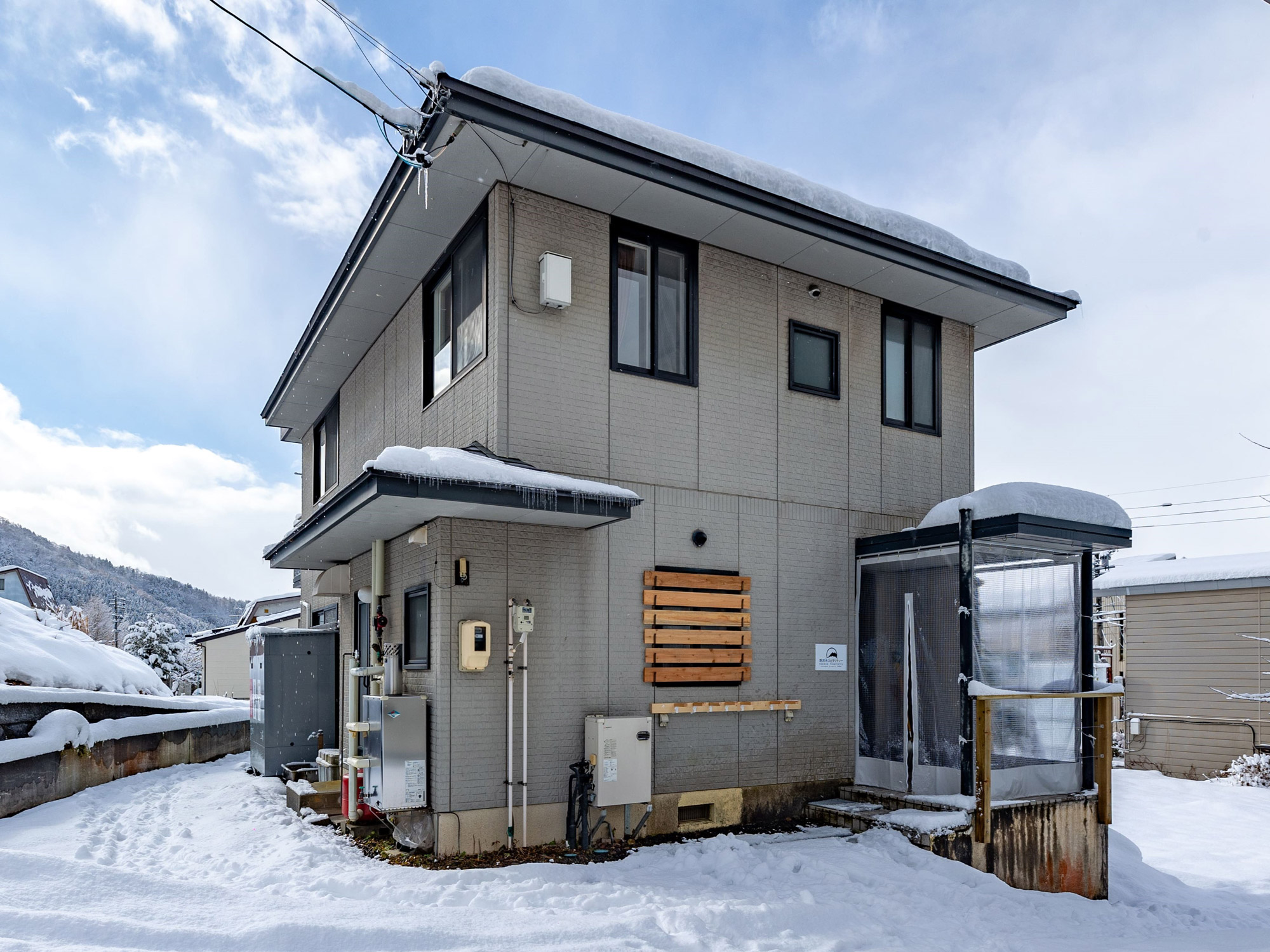Onsen
Natural hot springs or onsen 温泉 can be found in every region of Japan and are popular amongst all ages.
There are many types of hot springs - indoor, outdoor, traditional, modern, sulphur, chloride, and etc.

How to use
Having a bath in Japan isn’t an elaborate ritual. It’s a way to relax at the beginning or end of a busy day, not a test of your cultural adaptation. Mainly, the rules are just about being considerate to your fellow bathers.
Remember that washing, and bathing, are seen as two distinct and different activities, so bathing, or soaking in the bath is the way to enjoy onsen in Japan. Don’t get too hung up on the details, just watch what the locals do, and enjoy!
First… don’t stress!
Bathe before soaking. And oh, no suds!
%20(1).jpg)
Tip #1
Take what you need with you
The public baths don’t provide soap or towels, etc. It’s perfectly okay to take only a small towel if you just want to soak, but most of the locals will bring along a set of soap, shampoo, razors, etc., and a small towel. Traditionally, you don’t take a large towel with you (after bathing, you dab yourself damp, rather than dry) but we like a proper bath towel, and many younger Japanese agree with us. The public baths don’t have a toilet – go before.
.jpg)
Tip #2
Don’t bring food or drink with you
Contrary to popular belief, you don’t sit in a bath with a beer or sake (well, in some resort hot springs you might, but not in a public bath). Your bath will make any drinks you take afterwards taste extra special.
Tip #3
Try out the yukata
It’s perfectly okay – in fact normal – to walk to the public baths in your “yukata” (sleeping gown or pajamas, that your hotel or ryokan provides as sleeping wear. In warmer weather, you might even find wearing “yukata” more comfortable. It also makes for better photo opportunities.

Tip #4
Use the right bath
All the baths in Nozawa Onsen have clearly marked (in English) “men” and “ladies” entrances. Do make sure that you go in through a “mens” or “ladies” door as appropriate. Some public baths have a “laundry” entrance that’s only indicated in Japanese.
Address Nozawa and Residence Yasushi offer private use of their in-house onsen so no worries about using the right bath!
%20(1)%20(1).jpg)
Please remove your shoes before entering the changing room; there is usually a rack or shelf for placing shoes. In some of the baths there isn’t a separate changing room; the changing area consists of decking on the floor and cubbyholes on the wall of the bathing area. Take off all your clothes in the changing area and place them in one of the cubbyholes, together with your bath towel.
Small coin lockers are often available. Although your belongings will almost certainly be safe, for peace of mind it’s best not to bring valuables with you to the public bath.
Tip #5
Birthday suit time!
Other than Sparena, all the public onsens do not allow you to wear a bathing suit. Japanese bathe naked and would see a bathing suit as odd as wearing clothes in the bath at home.
Don’t feel embarrassed! The baths are used by everyone (naked) from 6 to 60 and beyond, so nobody is going to judge your love handles or hairy back (or be particularly impressed by your six pack).
However, it is the custom to bring a small towel into the bathing area, with which you can nonchalantly cover whatever you’d like covered while outside of the water. Do remember to remove the towel before you enter the bath and keep it out of the water.
%20(1).jpg)
Tip #6
Rinse before entering the bath
Before entering the bath, rinse your body with water from either a tap or the bath itself using a washbowl provided in the bathing area (if you use a washbowl to scoop water from the bath, make sure it runs off into the drain, not back into the bath).
If it’s cold outside, you’ll want to get in the bath as soon as possible, but do be careful when walking on a wet floor! In cold weather, you’ll see the locals just rinsing their body with minimal soaping to show that they’re nominally clean before hopping in; they’ll warm up then get out for a good scrub afterwards. However, you can scrub up property before your bath if you prefer.

Tip #7
Ease in S-L-O-W-L-Y
Enter the bath and soak for a while to warm up your body.
Do note that the bath water in Nozawa Onsen can be very hot (typical temperatures are well over 40 degrees Celsius). If it feels too hot, enter very slowly, and move as little as possible; once you’re in, you’ll be surprised at the degree of heat you can stand.
Most non-local Japanese visitors find the baths here extremely hot too, so take it easy and ease your way into the bath. If the temperature is unbearable, there’ll be a cold tap close by – turn it on for a while and stay close to it. Don’t forget to turn it off afterwards.
Some of Nozawa Onsen’s natural spring waters create mineral deposits that float in the bath and may coat the sides of the bath and the walls. They’re called “flowers of the onsen” and aren’t dirty. And the wood on the walls might look very old and stained, but from a Japanese point of view, that looks exactly what onsen-steeped wood should look like!
Tip #8
No suds please!
After soaking for a while (or before you soak, if you prefer), get out of the bath and wash your hair and body with soap at a water tap, while sitting on a stool or even on the floor. If the water tap is cold, or there isn’t an unoccupied tap, you can scoop hot water from the bath in a washing bowl instead.
The golden rule of all Japanese baths is to make sure that no soap gets into the bath water. The concept is that the bath water and the people in it, are clean! Rinse off the space around you after you’ve finished cleaning your body with soap.
Tip #9
Soak as many times as you like
Re-enter the bath and soak some more.
There’s no “right amount of time”. You’ll see locals sliding in and out in a minute or two, or spending half an hour chatting to their friends.
Enjoy your time here, this is your moment of relaxation.
Tip #10
Be sociable.
Even if you don’t speak any Japanese, smiling works, and a simple “hello” is universal. If a Japanese fellow bather tries their English on you, enjoy the conversation!
However, be sensitive to other bathers if you’re in a group – don’t be too noisy, and please, hold off the community singing.
Tip #11
No need to rinse after soaking
After you’ve finished soaking, you shouldn’t rinse your body with tap water, in order to take in the full benefit of the hot spring water’s minerals – they are medicinal and restorative. Why do you think Japanese people always look younger than they are?
Tip #12
Don't drip water in the changing area
Mop yourself with the small towel, wringing it out as you go, in the bathing area, so you don’t drip in the changing area. Use your big towel to get properly dry, change, take your shoes… and you’re done! We hope you always feel refreshed after each soak in the onsen water.
%20(1)%20(1).jpg)
Finally…
We repeat, don’t stress!
Bathing is a pleasurable interlude in a busy day. The locals are proud of their baths, and happy to share them with you. They are very welcoming and understand that you come from a different culture. They don’t expect you to be Japanese or behave the same as them.
But we do want to stress again that you shouldn’t get soap into the bath… wait, did we say that already?
.jpeg)







-min.jpg)



.jpg)


.png)

.png)
.jpg)

































.png)













